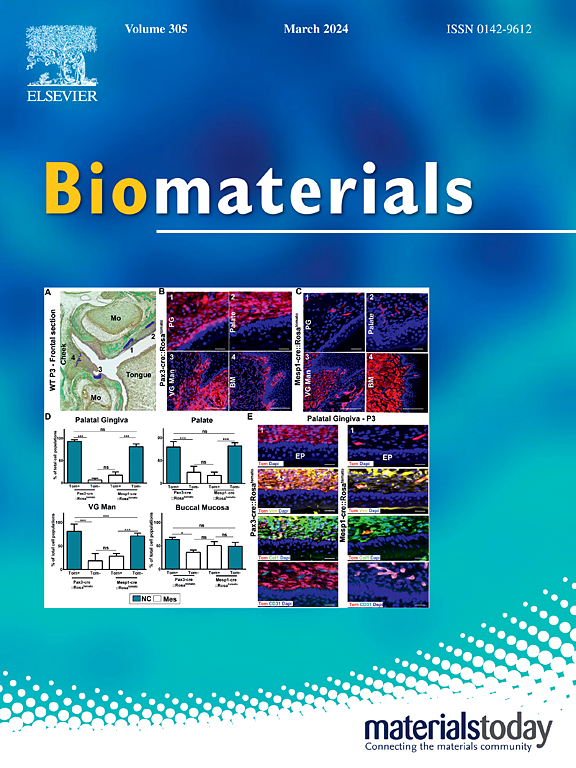An AIE-active near-infrared molecular probe for migrasome labeling
IF 12.8
1区 医学
Q1 ENGINEERING, BIOMEDICAL
引用次数: 0
Abstract
Migrasomes, newly identified organelles, play crucial roles in various physiological and pathological activities, including embryogenesis, immune responses, wound healing, and metastasis of cancer cells. Migrasome visualization is essential for the deep exploration of migrasome biology. Despite the reported labeling methods based on migrasome marker proteins, a simple and convenient method for migrasome labeling is more desirable compared to the complicated transfection technique. Here, an aggregation-induced emission (AIE) based near-infrared (NIR) molecular probe named TTCPy was presented, which can bind to the phospholipid on migrasomes and light up migrasomes with a turn-on NIR fluorescence. TTCPy allows for high-performance imaging of migrasomes in both live cells and living chorioallantoic membranes via simple and rapid staining. Moreover, TTCPy achieves live-cell super-resolution imaging of migrasomes, affording remarkedly improved spatial resolution and signal-to-background ratio. This work offers a simple yet powerful tool for migrasome visualization and will contribute to the booming hotspot of migrasome biology.

求助全文
约1分钟内获得全文
求助全文
来源期刊

Biomaterials
工程技术-材料科学:生物材料
CiteScore
26.00
自引率
2.90%
发文量
565
审稿时长
46 days
期刊介绍:
Biomaterials is an international journal covering the science and clinical application of biomaterials. A biomaterial is now defined as a substance that has been engineered to take a form which, alone or as part of a complex system, is used to direct, by control of interactions with components of living systems, the course of any therapeutic or diagnostic procedure. It is the aim of the journal to provide a peer-reviewed forum for the publication of original papers and authoritative review and opinion papers dealing with the most important issues facing the use of biomaterials in clinical practice. The scope of the journal covers the wide range of physical, biological and chemical sciences that underpin the design of biomaterials and the clinical disciplines in which they are used. These sciences include polymer synthesis and characterization, drug and gene vector design, the biology of the host response, immunology and toxicology and self assembly at the nanoscale. Clinical applications include the therapies of medical technology and regenerative medicine in all clinical disciplines, and diagnostic systems that reply on innovative contrast and sensing agents. The journal is relevant to areas such as cancer diagnosis and therapy, implantable devices, drug delivery systems, gene vectors, bionanotechnology and tissue engineering.
 求助内容:
求助内容: 应助结果提醒方式:
应助结果提醒方式:


